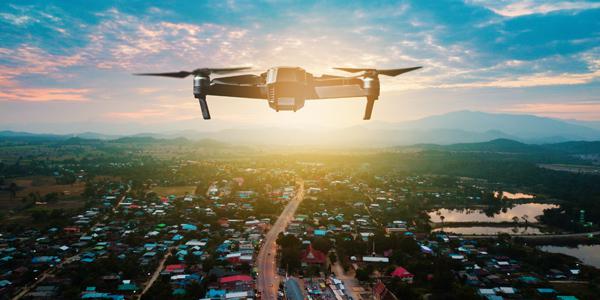DHS Ups Its Drone Detection Game
The number of unmanned aerial vehicles in the sky is expected to triple this decade. The need to find or manage drones in the sky, especially adversarial drones, will correspondingly grow, experts say.
In response, the Department of Homeland Security (DHS) Science and Technology (S&T) Directorate, through its research and development, is developing capabilities to improve the management of vulnerabilities that drones present, the department recently announced.
“Unmanned aerial systems, whether authorized or unauthorized, pose increasing threats to the protection of sensitive data and activities of individuals, businesses and authorities, as these devices can be used to infringe on privacy and interests,” a DHS official stated. “Detecting the presence of these drones is the first crucial step towards protecting sensitive data and activities.”
One of DHS’ efforts will focus on the threat that unmanned aerial vehicles (UAVs) could have to connected sensors and platforms, mobile computing, automation and autonomous systems, and the delivery of digital services, DHS reported. The department recently awarded $750,000 to the Regents of the University of Colorado, Boulder, Colorado, to develop the so-called DronePD Detection and Tracking System.
As opposed to existing UAV detection systems that are expensive or require a dedicated radio frequency band to actively scan for drones, the DronePD system will offer cost-effective, simple drone recognition to help manage privacy risks, DHS stated.
“Innovative solutions are needed to safeguard the privacy of critical information and data, as well as to prevent, mitigate and recover from the adverse effects of privacy incidents,” said William Bryan, the senior official performing the duties of the Under Secretary for Science and Technology. “S&T is developing solutions to ensure the government end-user’s data privacy is protected and consistent with outlined laws, policies and missions.”
Another DHS effort, with Sandia National Laboratories, employs machine learning and cameras to improve drone detection. Sandia is testing the use of temporal frequency analysis (TFA) to “dive deeper” into a video image.
TFA can capture tens of thousands of frames in a video, and using that analysis, a machine can learn about an object and its associations from how it moves through time in a video. Jeff Randorf, an S&T engineering advisor at DHS explained that because a video can identify something based on certain characteristics, neural networks can be used to recognize patterns and an algorithm can be trained to pick up on certain features.
“Instead of heat signatures, acoustic signatures or taking a video at face-value, TFA analyzes the frequency of pixel fluctuation in an image over time, eventually obtaining a ‘temporal frequency signature’ for the drones it has observed,” he said. “Pairing robust imaging systems with machine learning in this way only makes it a matter of time before discrimination is seamless.”
The method will be important as UAVs become autonomous, flying without radio controls. “Current systems rely upon exploiting electronic signals emitted from drones,” Bryana Woo, researcher at Sandia National Laboratories, said. “But they can’t detect drones that do not transmit and receive these signals.”
If mastered, TFA could be the most precise discrimination method to date, DHS reported. “When a machine can begin to easily identify drones in flight using temporal frequency analysis, it will have been a step forward for S&T and its partners in securing the skies for the safety of hobbyists, commercial industry and all citizens below, through visuals alone,” the Department indicated. “Airspace can be free of danger, open only to the delivery and recreational drones promising to make life more enjoyable for Americans.”
Other drone-detection related projects that DHS is pursuing include: demonstrations at Camp Shelby, Mississippi to develop components for law enforcement UAVs; developing a DHS interface for the future UAV Traffic Management System; and monitoring the state of counter-UAV capabilities.
“There could always be new barriers to detection, which is why S&T has taken on the nefarious drone issue from multiple angles,” DHS stated.





Comments